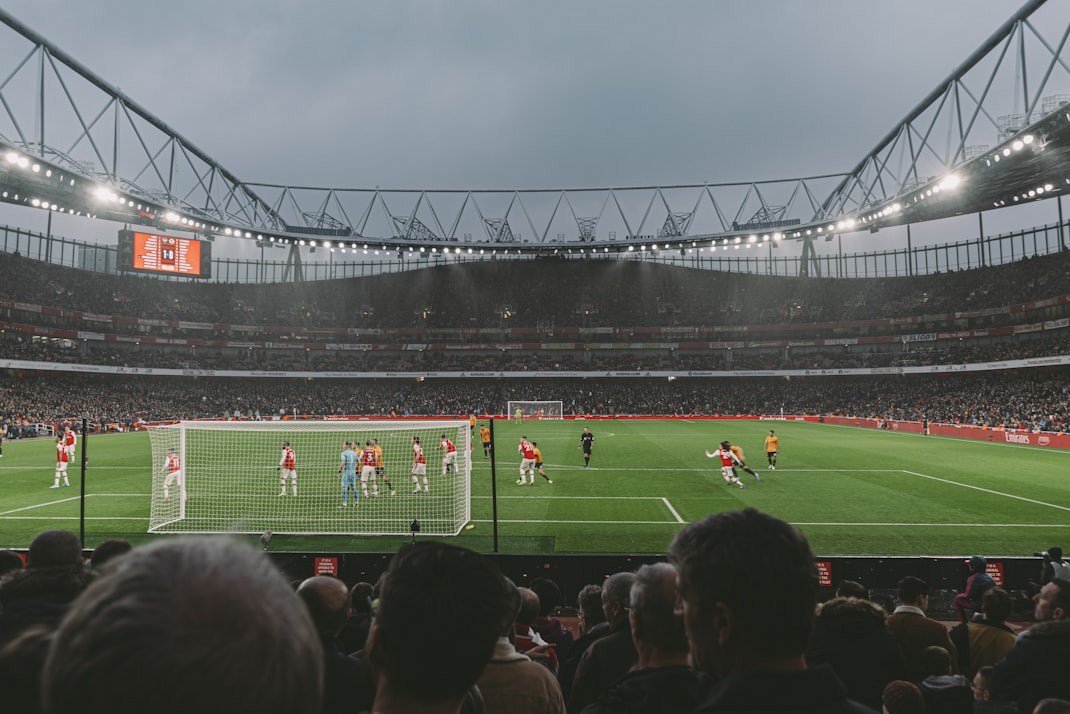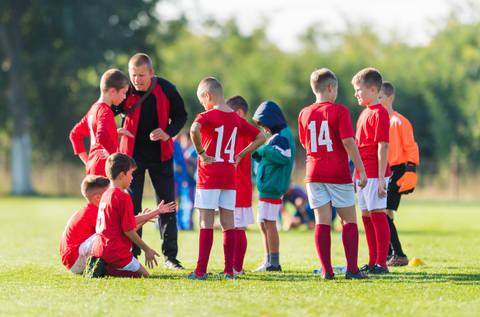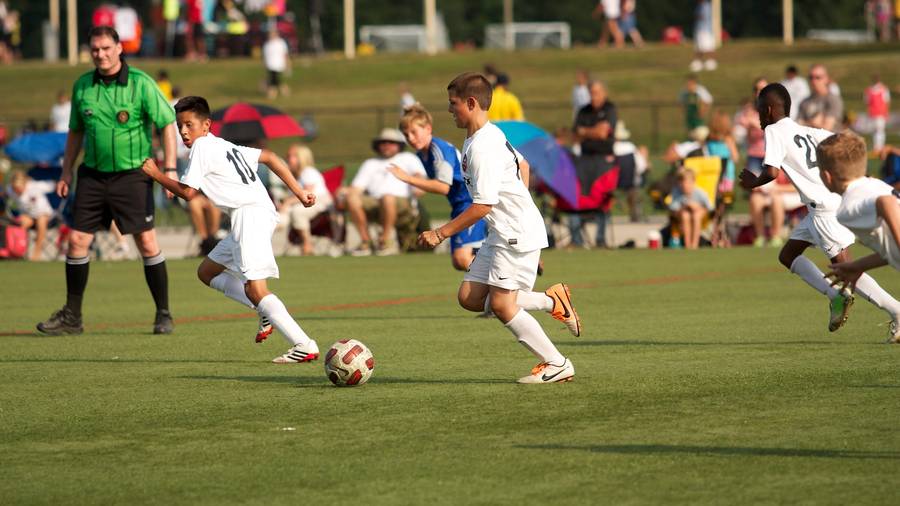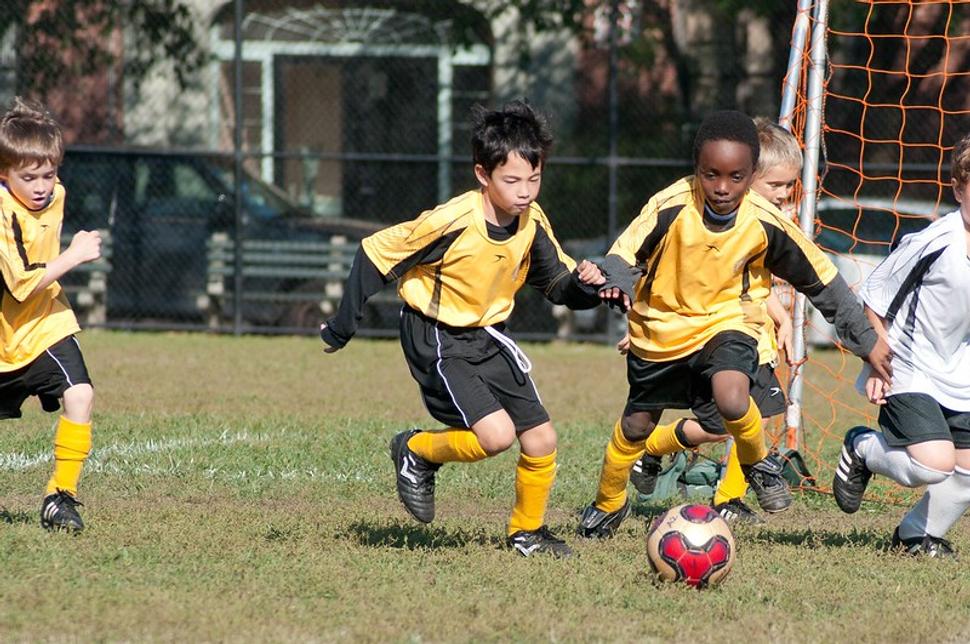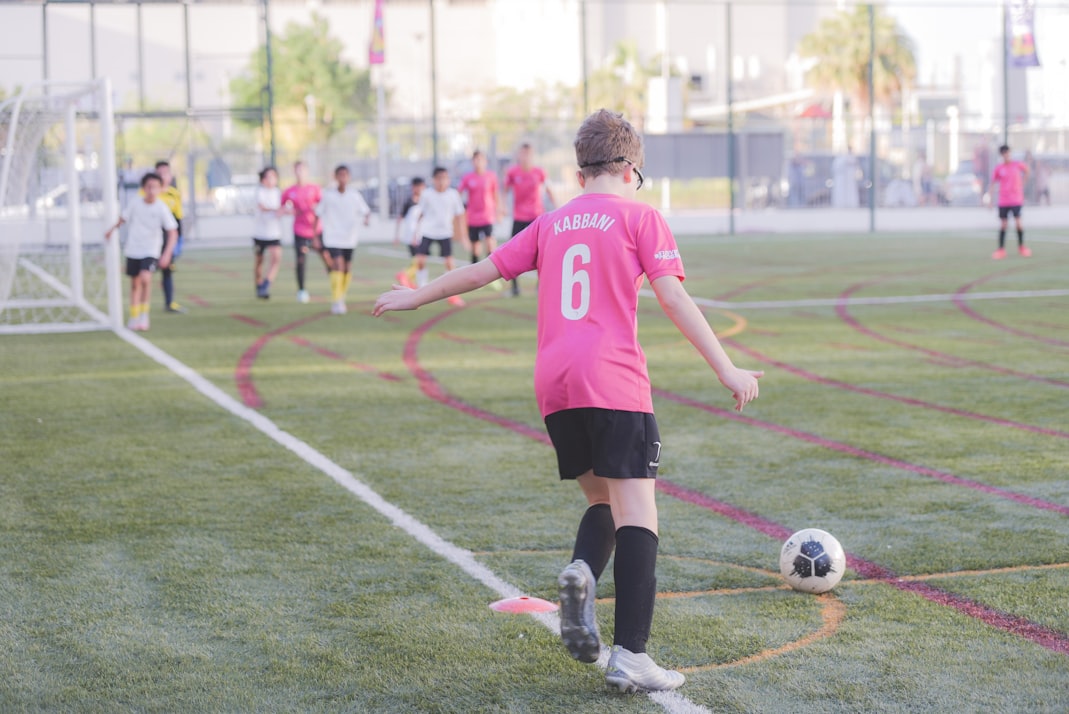
For those of us that have been around junior football for a lifetime in one way or another, it’s interesting to compare some of the training techniques in evidence these days compared to what was around a few decades ago.
I’m a firm believer that whilst the game has changed significantly over the years to become more technical and less physical, there are still a few dominant principles that hold true and these should be reflected in the training that takes place.
From traditional shuttle runs on muddy pitches to the more cutting edge technology of today, the landscape of junior football training in the UK has definitely been transformed.
Not too long ago, youth football training largely revolved around repetitive drills focused on getting fit and the basic skills of passing, dribbling, and shooting.
Coaches would gather their young players, armed with cones and a whistle to instil the fundamentals of the game.

However, as the understanding of sports science and human physiology advanced at the top level, so too have the methods employed in junior football training.
The stronger regulation of coaching and coach education in junior football has largely moved the game on from well meaning parents delivering what they had done 30 years previously to a much more structured approach to training.
I’ve found that one of the most significant developments in recent years has been the integration of technology into junior football training.
Veo and video analysis tools have revolutionised the way coaches assess player performance, providing good insights into areas for improvement and tactical adjustments.
Similarly, some clubs have invested and now have data tracking that enables coaches to monitor player’s physical metrics.
Beyond the physical aspects of the game, there has been a growing recognition of the importance of cognitive training in junior football development.
The old adage that ‘the first yard is in the head’ taking on renewed significance with coaches now incorporating exercises designed to enhance decision making, spatial awareness, and even problem solving skills into their training sessions.
By nurturing the footballing brain alongside technical proficiency, young players are better equipped than ever to excel on the pitch.
We know that in recent years, concerns over the long term effects of head injuries in football have prompted rule changes at grassroots level.
Restrictions on heading the ball in training for young players have forced coaches to adapt their methods to minimise the risk of concussion and long term brain injury.
This has prompted more innovative thinking and alternatives to heading exercises have gained popularity as safer alternatives.
In addition to rule changes though, the biggest change has come from the trickle down influence of professional football academies which have fundamentally reshaped the landscape of junior football development in the UK, exerting a profound influence on both aspiring young players and grassroots clubs.
This seismic shift has brought about a raft of changes, from increased investment in junior development infrastructure to the implementation of structured talent pathways.
However, alongside the undeniable benefits, it has also raised significant questions and challenges, particularly around the purpose of grassroots clubs and whether they should be moving with the times.
Professional football clubs have significantly ramped up their investment in youth development infrastructure, creating state of the art facilities equipped with cutting edge technology and the most highly qualified coaching staff.
Academies provide young players with access to the best trainingfacilities, medical support, and educational resources, elevating the standard of player development to unprecedented levels.
Clubs have also expanded their scouting networks, casting a wider net to identify and recruit talent from across the country, regardless of geographical boundaries or background resulting in a talent drain.
Some would argue that the trickle down benefits from Academies haven’t compensated for the broader cultural impact on grassroots football, shaping perceptions of success and achievement among players, parents, and coaches.
There is a growing tendency for young players to prioritise the pursuit of ‘success’ (in whatever way they choose to define it) over the enjoyment of the game itself, leading to increased competition and pressure at grassroots level.
This shift in mentality raises questions about the fundamental purpose of junior football and the importance of developing a positive and inclusive sporting culture that prioritises participation, development, and enjoyment for all.

Whilst many grassroots clubs have adopted some of the professional influences in terms of improved coaching, equipment and facilities, is it right for them to be trying to copy what the very top professional clubs are doing with junior development? Barcelona's La Masia is renowned worldwide for its exceptional youth development program, which has produced some of the greatest football talents of recent times.
At the heart of La Masia's success lies its innovative training methods, particularly in terms of ball mastery.
Players undergo rigorous drills focused on technical proficiency, with an emphasis on close control, quick decisionmaking, and precise passing.
These drills are complemented by small-sided games and tactical exercises designed to instil the principles of precise positional play, a hallmark of Barcelona's style.
Through a holistic approach that integrates physical, technical, and cognitive elements, La Masia cultivates well rounded players capable of thriving in the fast-paced world of professional football.
Closer to home, Southampton FC boasts a reputation for nurturing young talent through its progressive coaching philosophy and commitment to player development.
Central to Southampton's approach is the belief in overall development, which prioritises not only technical skills but also physical conditioning, mental resilience, and tactical understanding.
Training sessions are meticulously planned and executed, with a focus on individualised feedback and tailored interventions to address specific areas of improvement.
They place a strong emphasis on character development, instilling values such as discipline, teamwork, and perseverance in its young players.
By developing this supportive and challenging environment, Southampton's youth setup empowers players to reach their full potential and pursue successful careers in football.
One of the most famous clubs in Europe for developing youth talent is Ajax Amsterdam's and their renowned youth academy has long been hailed as a beacon of talent development, producing a steady stream of world class players for both club and country.
Traditionally, at the core of Ajax's training philosophy is the principle of total football, a fluid and dynamic style of play characterised by positional interchangeability and collective responsibility.
To instil these principles, Ajax's youth coaches prioritise technical excellence, tactical intelligence, and creative expression in their training sessions.
Players are encouraged to experiment, take risks, and express themselves on the pitch, helping to support a culture of innovation and creativity.
Ajax place a strong emphasis on game intelligence, teaching players to ‘read the game’, anticipate opponent’s movements, and make quick decisions under pressure.
Through a combination of highly structured training, competitive matches, and individualised coaching, Ajax's youth academy equips players with the skills and mindset to succeed at the highest level of the game.Given the decades of evolution and investment these clubs have devoted to their development of young players, is it realistic to expect grassroots clubs to become shadow versions of academies? Is it right that they adopt similar principles and training methods, or should they be sticking to what they know and providing the most accessible routes into playing football for everyone?


